Haeger Potteries began its life in 1852 as a utilitarian brick maker in Dundee, Illinois. They sourced their clay along the banks of the local Fox River, a tributary of the Illinois River. In 1871, David Haeger, a German immigrant, purchased half of the company. Within a year, he had purchased the other half. He began producing tiles and operated under the name Dundee Brick and Tile.
The Great Fire of Chicago, in 1871, provided a tremendous opportunity for Haeger. The company shipped millions of bricks and tiles to help rebuild the devastated city.
In 1914, David's son, Edmund Haeger, introduced "artware" (decorative consumer items) to the company's production line. Edmund recruited Martin Stangl from Fulper Pottery to oversee this transition. (Stangl stayed with Haeger until 1920, after which he returned to New Jersey to purchase Fulper Pottery.) The first piece introduced was an Arts & Crafts vase named "Adam" (1914). The next year, the company introduced "Eve," another Arts & Crafts piece. (Click HERE to see Adam, Click HERE to see Eve.) Throughout the Twenties, Haeger greatly expanded their range of decorative artware.
In 1934, Haeger hired a ceramics designer, Royal Arden Hickman to design a range under the name "Royal Haeger." He was named Chief Designer from 1938 until 1944, at which time he left the company (though he provided freelance designs after that).
During World War II, like many American manufacturers, Haeger re-tooled its plant to support the war effort, making bomb fuses, field telephones and other military supplies and equipment. After the War, Haeger returned to decorative ceramics-making and quickly transitioned to designing products for the new, post-war Modernist aesthetic.
One of these new lines was the "Earth Wrap" series, made in the Sixties and Seventies: vases, bowls, planters and lamps (like the piece shown above). These pieces were underglazed in matte chocolate brown, then "lashed" with uncontrolled splashes of burnt orange and harvest gold matte glazes—colorful, contrasting top glazes which crackled in the kiln, creating a textured, "reptilian" appearance. This color palette was popular during the Mid-Century Modernist aesthetic. And the randomness of the glazing ensured that no two pieces ever were quite the same.
The lamp shown above, part of Haeger's "Earth Wrap" line, is a large ceramic vessel, glazed with the signature finish. Click on the photo above to learn more about this handsome lamp.
Though our Greenwich Village store is now permanently closed, LEO Design is still alive and well! Please visit our on-line store where we continue to sell Handsome Gifts (www.LEOdesignNYC.com).
To arrange a visit our Pittsburgh showroom (by private appointment only), please call 917-446-4248.


